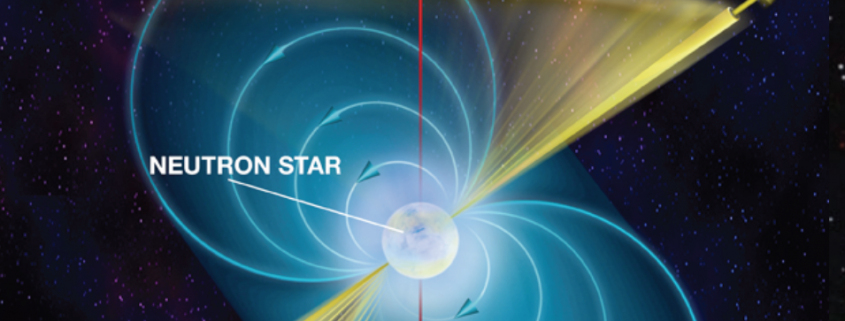First Pulsar Light with I-LOFAR!
Pulsars are rotating neutron stars that beam radiation into space like rapidly rotating lighthouses. Last week a team of scientists from Ireland and the UK used I-LOFAR and a new Dell-EMC cluster called the “REALtime Transient Acquisition Cluster (REALTA)” to observe our first pulsar, B0950+08.
The plot below shows the first thirty seconds of an observation of pulsar with the I-LOFAR station at Birr, Co. Offaly. Signals that travel through the interstellar medium are delayed in a frequency-dependent way as they travel to Earth – the greater the distance the greater the delay. Here we recorded data from the direction of this pulsar and compensated for a range of different delays.

First pulsar light with I-LOFAR! Pulses detected every ~253.0638 milliseconds.
This is the first pulsar to be detected with I-LOFAR and marks the beginning of pulsar observing at the site. When fully up and running it should be capable of monitoring a hundred or so pulsars regularly.
Pulsar pulses act like the ticks of very precise clocks spread throughout the Milky Way. By monitoring these clocks one can study effects of gravity, high-density neutron star physics, the composition and structure of the Milky Way and much more besides.
These exciting investigations into fundamental questions of physics will be pursued from the I-LOFAR station, situated in the grounds of Birr Castle, and the performance is expected to improve. I-LOFAR’s sensitivity is best straight up and falls off towards the horizon, and this pulsar only ever gets as high as 45 degrees above the horizon. So the sensitivity in this direction is half the maximum, and for this first observation only one quarter of the available bandwidth was used reducing the sensitivity in half again. This is only the tip of the iceberg!
The observations were obtained by a team including Evan Keane (Square Kilometre Array/Jodrell Bank), Joe McCauley, Peter Gallagher, Pearse Murphy and Brian Coghlan (TCD), Griffin Foster (Oxford/Berkeley/Breakthough), Paul Callanan and Luke Timmons (UCC), and Matt Redman and Nevenoe Guegan (NUIG).
I-LOFAR and REALTA are supported by research infrastructure grants from Science Foundation Ireland. REALTA is owned by UCC and NUIG and hosted at TCD’s Rosse Observatory.



